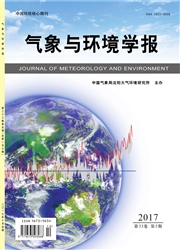

 中文摘要:
中文摘要:
根据2002年4月5日河南省人工催化增雨作业数据,分别采用作业区域趋势对比双比分析评估方案、区域趋势相关回归评估方案、区域趋势协变量多元回归评估方案、FCM(浮动对比区历史回归)评估方案、以降水量为协变量的CA—FCM评估方案和以降水量与整层大气可降水量为协变量的CA—FCM评估方案进行效果评估。结果表明:协变量由降水量和整层大气降水量2个组成的CA—FCM方法,由于引入了不受催化影响的物理协变量作为控制因子.以及采用了聚类分析提高了对比区和影响区相关性,其评估效果最好,显著水平高于0.05;其他评估方法评估效果较差。
 英文摘要:
英文摘要:
Based on cloud seeding data on April 5,2002 in Henan province, cloud seeding effects were evaluated by six methods, i. e. double contrast method of regional rainfall tendency control, regression analysis method of regional tendency correlation, multiple regression analysis method of regional tendency covariant, floating control historical regression method (FCM), cluster-analysis-based floating control historical regression method (CA- FCM) using rainfall as a covariant and CA- FCM using rainfall and atmospheric perceivable water as covariants. The results indicate that the effect of CA- FCM using rainfall and atmospheric perceivable water as covariants is better, for the physical covariant that is not influenced by catalyze is used as controlling factor and cluster analysis method is employed. The significant is more than 0.05. The effects of other methods are worse.
 同期刊论文项目
同期刊论文项目
 同项目期刊论文
同项目期刊论文
 期刊信息
期刊信息
